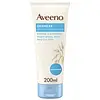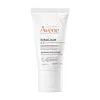What's inside
What's inside
 Key Ingredients
Key Ingredients

 Benefits
Benefits

 Concerns
Concerns

 Ingredients Side-by-side
Ingredients Side-by-side

Water
Skin ConditioningGlycerin
HumectantPanthenol
Skin ConditioningDistearyldimonium Chloride
Petrolatum
EmollientIsopropyl Palmitate
EmollientCetyl Alcohol
EmollientDimethicone
EmollientAvena Sativa Kernel Flour
AbrasiveAvena Sativa Kernel Oil
Skin ConditioningSteareth-20
CleansingBenzalkonium Chloride
AntimicrobialCeramide NP
Skin ConditioningAvena Sativa Kernel Extract
AbrasiveSodium Chloride
MaskingWater
Skin ConditioningCaprylic/Capric Triglyceride
MaskingGlycerin
HumectantCetearyl Alcohol
EmollientAquaphilus Dolomiae Extract
Skin ConditioningArginine
MaskingCetearyl Glucoside
EmulsifyingCetyl Alcohol
EmollientCitric Acid
BufferingEvening Primrose Oil/Palm Oil Aminopropanediol Esters
Skin ConditioningGlyceryl Stearate
EmollientGlycine
BufferingOenothera Biennis Oil
EmollientPEG-100 Stearate
Polyacrylate-13
Polyisobutene
Polysorbate 20
EmulsifyingSorbitan Isostearate
EmulsifyingTocopherol
AntioxidantTocopheryl Acetate
AntioxidantWater, Caprylic/Capric Triglyceride, Glycerin, Cetearyl Alcohol, Aquaphilus Dolomiae Extract, Arginine, Cetearyl Glucoside, Cetyl Alcohol, Citric Acid, Evening Primrose Oil/Palm Oil Aminopropanediol Esters, Glyceryl Stearate, Glycine, Oenothera Biennis Oil, PEG-100 Stearate, Polyacrylate-13, Polyisobutene, Polysorbate 20, Sorbitan Isostearate, Tocopherol, Tocopheryl Acetate
 Reviews
Reviews

Ingredients Explained
These ingredients are found in both products.
Ingredients higher up in an ingredient list are typically present in a larger amount.
Cetyl Alcohol is a fatty alcohol. Fatty Alcohols are most often used as an emollient or to thicken a product.
Its main roles are:
Though it has "alcohol" in the name, it is not related to denatured alcohol or ethyl alcohol.
The FDA allows products labeled "alcohol-free" to have fatty alcohols.
Learn more about Cetyl AlcoholGlycerin is already naturally found in your skin. It helps moisturize and protect your skin.
A study from 2016 found glycerin to be more effective as a humectant than AHAs and hyaluronic acid.
As a humectant, it helps the skin stay hydrated by pulling moisture to your skin. The low molecular weight of glycerin allows it to pull moisture into the deeper layers of your skin.
Hydrated skin improves your skin barrier; Your skin barrier helps protect against irritants and bacteria.
Glycerin has also been found to have antimicrobial and antiviral properties. Due to these properties, glycerin is often used in wound and burn treatments.
In cosmetics, glycerin is usually derived from plants such as soybean or palm. However, it can also be sourced from animals, such as tallow or animal fat.
This ingredient is organic, colorless, odorless, and non-toxic.
Glycerin is the name for this ingredient in American English. British English uses Glycerol/Glycerine.
Learn more about GlycerinWater. It's the most common cosmetic ingredient of all. You'll usually see it at the top of ingredient lists, meaning that it makes up the largest part of the product.
So why is it so popular? Water most often acts as a solvent - this means that it helps dissolve other ingredients into the formulation.
You'll also recognize water as that liquid we all need to stay alive. If you see this, drink a glass of water. Stay hydrated!
Learn more about Water